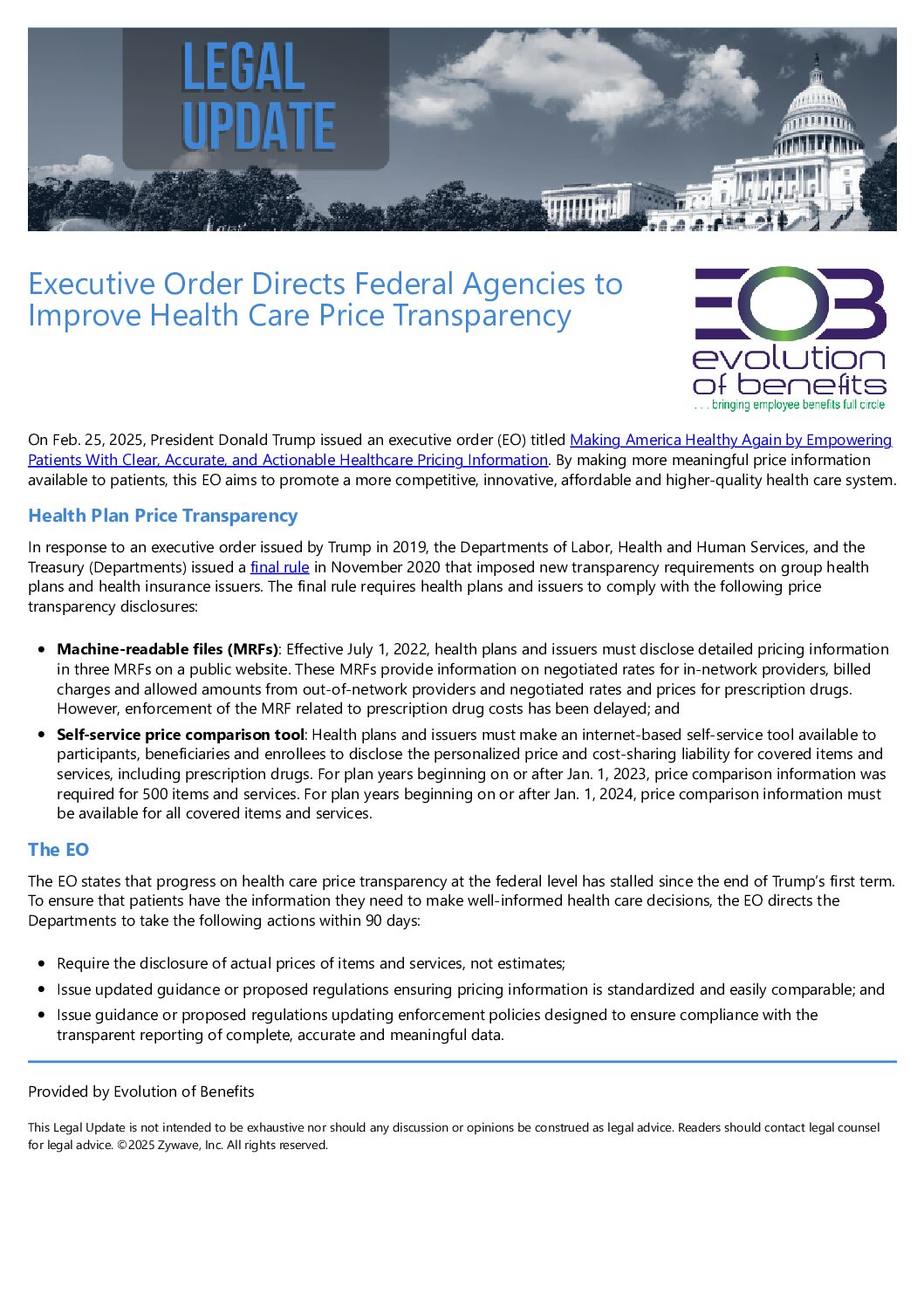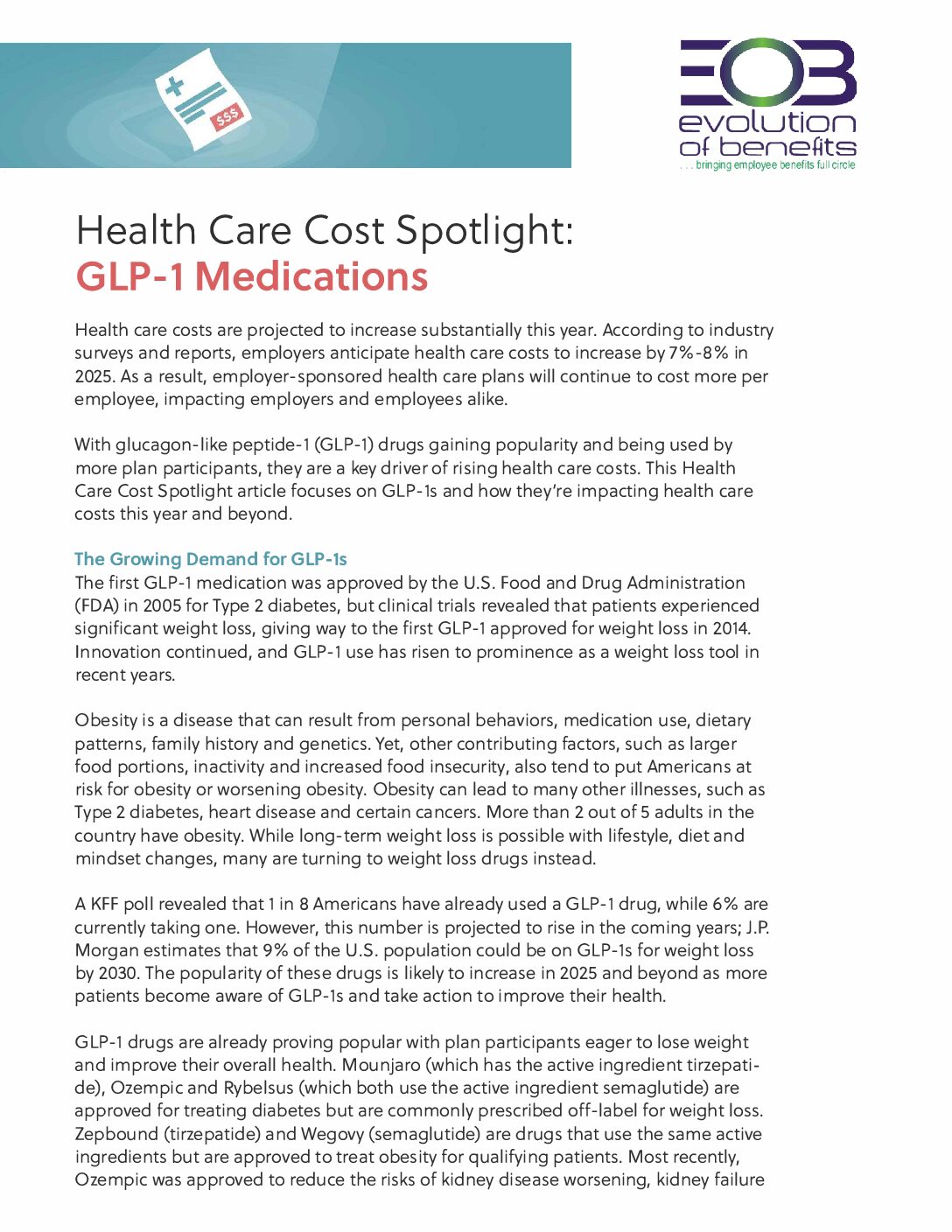Executive Order Directs Federal Agencies to Improve Health Care Price Transparency (March)

On Feb. 25, 2025, President Donald Trump issued an executive order (EO) titled
Making America Healthy Again by Empowering
Patients With Clear, Accurate, and Actionable Healthcare Pricing Information. By making more meaningful price information
available to patients, this EO aims to promote a more competitive, innovative, affordable and higher-quality health care system.
HR Brief – Newly Passed Legislation Modifies ACA Reporting Requirements HR Brief – (March)

At the end of 2024, Congress passed two new laws, the Paperwork Burden Reduction Act and the Employer Reporting Improvement Act. These laws eased the Affordable Care Act (ACA) reporting requirements for employers and set new limits on the IRS’ assessment of “pay-or-play” penalties, among other changes.
Benefits Buzz – ERISA Fiduciary Breach Claims Dismissed in Prescription Drug Lawsuit (March)

On Jan. 24, 2025, a U.S. District Court for the District of New Jersey dismissed two claims in a class-action lawsuit filed against Johnson & Johnson (J&J), which alleged that the company breached its fiduciary duties under ERISA by mismanaging its prescription drug benefits plan and costing the plan and its participants millions of dollars due to higher out-of-pocket costs for prescription drugs and higher premiums, among other things.
The Power of Protein(March)

Protein is having a moment, and it’s for good reason. While some focus on it for muscle-building, others view it from a weightloss perspective. Regardless of personal goals, protein is a macronutrient essential for body function. It is made up of many building blocks called amino acids and is fundamental for good health.
View and download the latest Live Well, Work Well newsletter





















